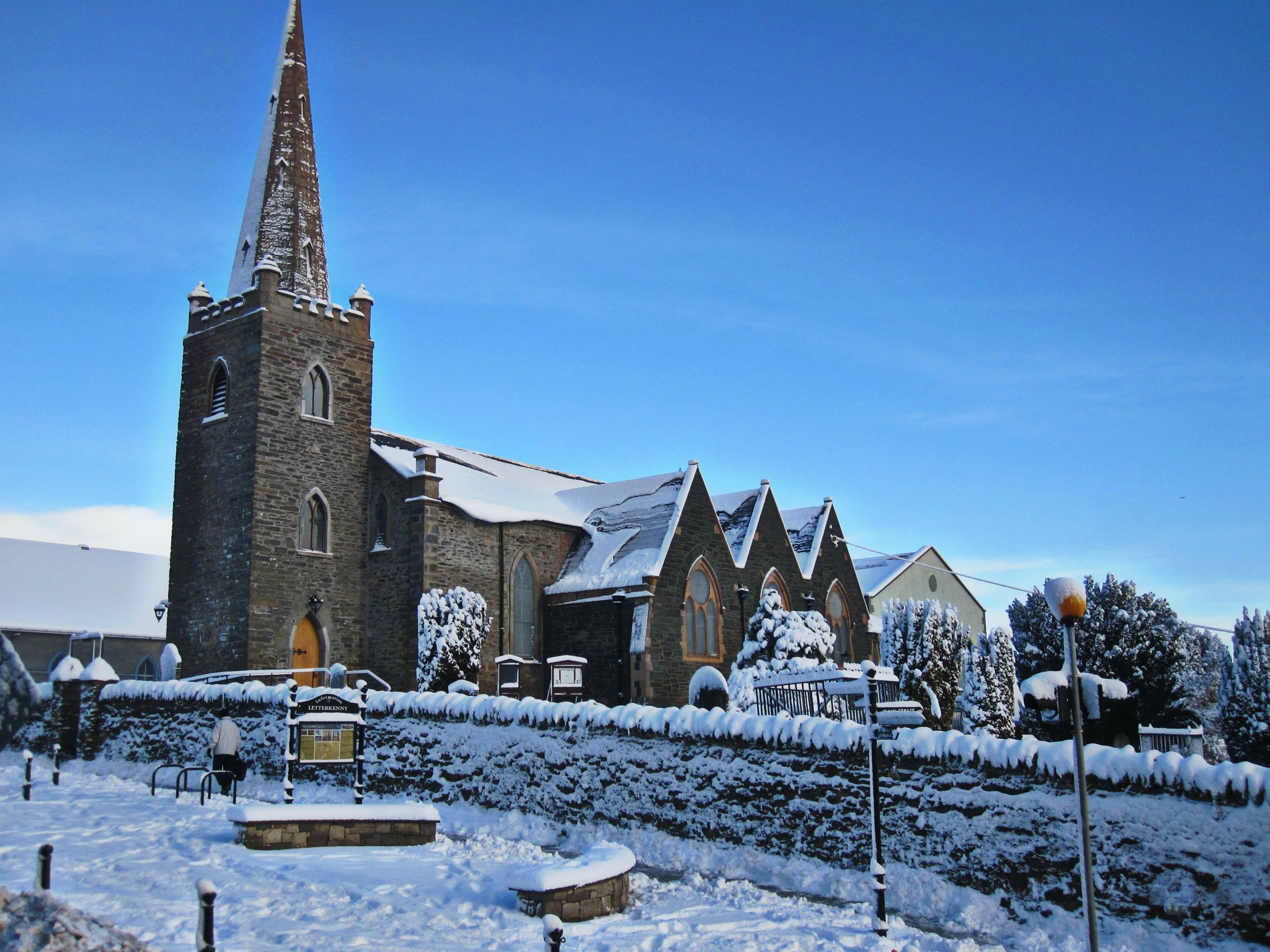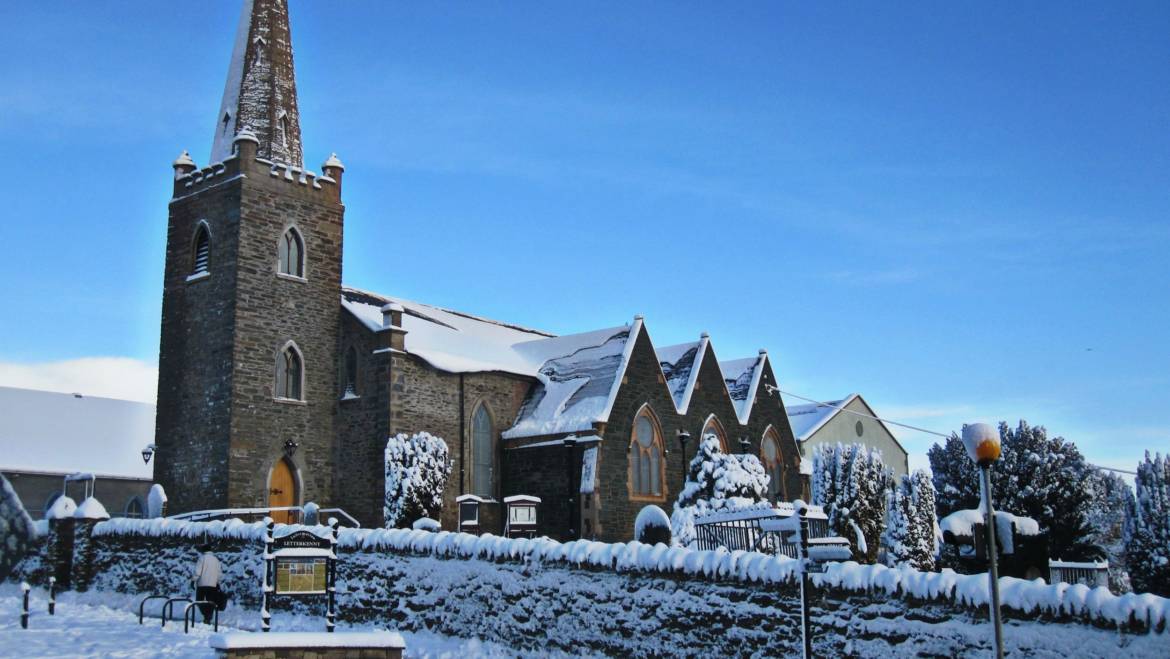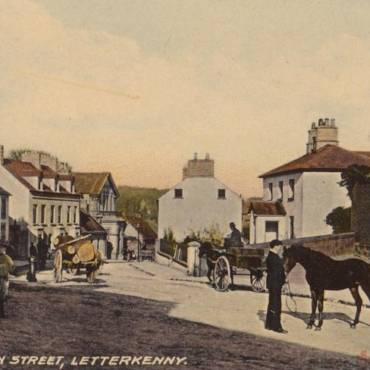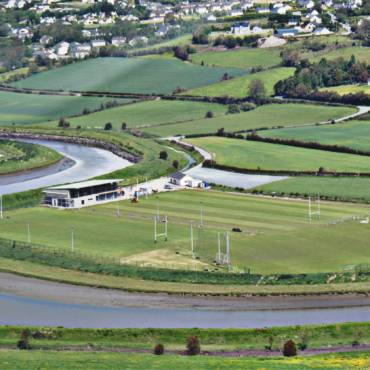The Church of Ireland in Letterkenny
According to census statistics, Catholicism is the predominant religion in the town of Letterkenny today. However, given that the town has its origins in the Plantation of Ulster, it is no surprise to learn that many individuals and families of both the Church of Ireland and Presbyterian communities have left a rich imprint on the history of the town – not to mention, of course, Methodists, Baptists and many other religions that still practice their beliefs locally today.
The church at Conwal has its origins in the 7th century under Fiachra, son of Ciarán, and by 1425, Nicholas Magmalgaussa was herenach of the Abbey, being succeeded by John McGillabride, Roger Macungail, Godfredus Macdalaidh and Eugenius O’Gallagher. At Leck, the original church remains are believed to date from 1336 (rebuilt in 1840) while a monastery at Aughananshin is thought to have existed from the 7thcentury as mensal lands of the Muintir Ceallach (or Kellys).
However, in the immediate aftermath of Plantation, the churches and lands of Leck, Aughananshin and Conwal and others were transferred to the ‘Established Church’. Religious territories were known as ‘glebe’ lands and their locations near the town are easily located today by their names such as Gartan Glebe, Dooen Glebe and Conwal Glebe.
Phelim O’Doghertie was installed as Rector of Conwal in 1609 and by 1615, Dougall Campbell (who ‘understandeth the Irish language and is able to preach herein’) had succeeded him as Rector. As the ancient site had been badly neglected over the years, it was therefore decided that a new church was needed. One of the stipends of building a new town in the Plantation was to have its own church near to its inhabitants and as the abbey at Conwal was deemed too far away from the new town (while the abbeys of Leck and Aughananshin were in different parishes) work began on the construction of a new church near to the centre of the still young town, completed by 1636.
This church was constructed within a short walking distance of the Market Square at a junction of two streets – one from the town to the church called Church Street and one leading to the castle of the Marburys called Castle Street. The church was built using stone from the nearby quarry at Sentry Hill, and it was here that Lady Johanna Marbury and her husband Sir George were buried in 1638 and 1639 respectively.
Many renovations took place in the church itself over the years to the extent that unfortunately very little of the original building remains. Rev. William Spann (Rector 1715-1752) had the roof slated in 1733 and he donated a silver chalice and paten to the church in 1744, which the church still has in its possession. In 1776, it was almost entirely demolished when the nave was extended and a chancel was added under the auspices of Rev. John Whittingham (Rector 1753-1779) but the original tower was retained while the original date stone from 1636 can still be seen as part of the building. Rev. Charles Boyton (Rector 1832-1836) oversaw a new spire being built in 1832 while Rev. Henry Kingsmill (Rector 1836-1876) added a south aisle and vestry room in 1865.
In 1809, Rev. Joseph Stopford was appointed Rector and it was under him that Glendooen Rectory was built as a residence in 1814. It was here in 1832 that his grandson, Stopford Brooke was born; he would later go on to translate the German carol “Stille Nacht” into English. Glendooen Rectory remained as the residence of the rectors until 1913 when Lancelot Eustace Smyth and his wife, Frances Elizabeth Rosalie Smyth, presented their private residence of Murrac A Boo to the parish in memory of her father Major Doyne – Archdeacon William Hardy Holmes was the first to occupy this new residence. Following the sale of Murrac A Boo to the Urban District Council in 1979, the rectory was located in Magherenan from 1980 until the present rectory on New Line Road was built in 1998 for Canon Stewart Wright.
The Irish Church Act of 1869 led to the disestablishment of the Church and the creation of the new ‘Church of Ireland’. This came into effect in 1871 and one year later, the parishes of Aughananshin and Leck were formally amalgamated, being further merged with the Parish of Conwal in 1900 creating the Conwal Union. By 1957, Gartan was added to this union while the churches at Leck and Aughananshin were closed down with all Church of Ireland parishioners of Letterkenny attending service in Conwal Parish Church. For the record, the twentieth century rectors of Conwal Parish Church were: Richard Aemilius Baillie (1876-1902), Joseph Potter (1903-1904), William Fitzroy Garstin (1905-1915), William Hardy Holmes (1916-1918), Henry St. George McClenaghan (1919-1937), Leslie Robert Lawrenson (1938-46), Louis Warden Crooks (1946–80), Peter Graham Cartwright (1980-84), Peter Francis Barrett (1985-90), William Wright Morton (1991-1997), William Charles Stewart Wright (1998-2016) and David Houlton (2017-present).




